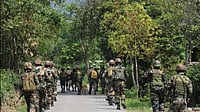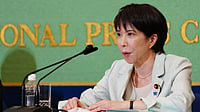THE slide of the rupee was inevitable, yet it took everyone by surprise. With corporates hitting the panic button, the RBI moved in to prevent a rapid fall, which set off an outcry from exporters. This forced an unsure government to send out mixed signals, resulting finally with everyone concerned being unhappy, till the two-day strike by bank employees on August 28 and 29 shut forex trading down anyway, so everyone was even unhappier.
On August 1, RBI governor C. Rangarajan had hinted at the bank's intervention if the rupee appreciated against the dollar beyond a point. Then, on August 15, deputy governor Y.V. Reddy stated that the rupee was overvalued. Finally, on August 19, Prime Minister Gujral said: "The Finance Ministry and the RBI are currently working on the exchange rate band within which the rupee would be allowed to move freely." That is, the government would keep the rupee within a certain price band against the dollar, intervening every time it dropped or rose out of the band.
This was enough to send forex trading terminals wild. In one day, the rupee fell from Rs 35.71 to Rs 36.15 to a dollar. The government's clarification to Gujral's statement—that he was merely referring to a suggestion by the Tarapore Committee report on capital account convertibility—failed to improve matters. For, by now, the market had decided that the rupee was overvalued and the government was preparing the ground for devaluation.
Says K.N. Dey, senior vice president, Mecklai Financial & Commercial Services Ltd: "The present debacle was driven mostly by sentiment, not fundamentals." As speculation gathered momentum, sudden corporate demand also added to the decline. SBI was said to have bought $250 million in one day, while some corporate houses indulged in transactions of over $50 million. In less than 72 hours, the rupee had touched Rs 36.70, an 18-month low.
Then the RBI moved in, selling dollars to pump the rupee up. Consequently, it steadied around Rs 36.50, calming corporates who went in for dollar debts to reduce their cost of funds. A depreciation of the rupee not only negates the advantages of such low-interest loans, but can even raise cost of funds. But the export community raised strong objections, pointing out that several major currencies had fallen against the dollar in the last few months. So, by holding the rupee steady against the dollar, the government was actually allowing it to rise against other currencies, and therefore making Indian exports more expensive and uncompetitive. "In the last three months, the deutsche mark is down 1.85 to 1.42, the lowest against the dollar in eight years. Since the rupee is linked to the dollar, we had to pay about 20 per cent more to get marks," complains Ramu Deora, president, Federation of Indian Exporting Organisations. "Indonesia, Thailand, Malaysia, Philippines, Bangladesh—all have devalued about 20 per cent. This makes their goods much cheaper than ours in the international market. We've been pleading with the government that the rupee be devalued 15 to 20 per cent. Not only will exports not grow if this is not done, about 30 per cent of the small and medium industries will have to close down. "
Export margins, already wafer-thin, are disappearing. Says Satish Rakyan, director, general secretary, Delhi Exporters Association: "Since our contracts are in foreign currency, the weakening of say the deutsche mark, reduces our export realisation." "Bureaucrats are convinced that the rupee must be devalued, but since it is a 14-party coalition they are loath to take the decision," says Deora.
The implications for the economy could be severe. The rupee has been rising because of India's $30-billion forex reserves. But of this, $8 billion is stockmarket investments, which could disappear in a jiffy. Says Deora: "Forex reserves must be built on export earnings and not on speculative dollars coming in." Export growth in April-June this year was not even 1 per cent.
The other issue that the rumpus over the rupee highlights is that Indian corporates may not yet have grasped the workings of the global currency markets. Despite a similar crisis barely two years ago, in September 1995, when the rupee suddenly depreciated from Rs 31 to Rs 38 to a dollar, many corpo-rates failed to hedge their forex exposures, that is, cover their positions in the forward dollar market, to protect their future against sudden volatility. Says J. Moses Harding, head of the forex treasury division of IndusInd Bank: "It's a clear case of severe indiscipline among the corporates of the country. It's unlikely the rupee will go back to pre-36 level. Gradually, even RBI would prefer the rupee to settle between Rs 36.50 and Rs 37 by the year-end."













.jpg?auto=format%2Ccompress&fit=max&format=webp&w=376&dpr=2.0)












